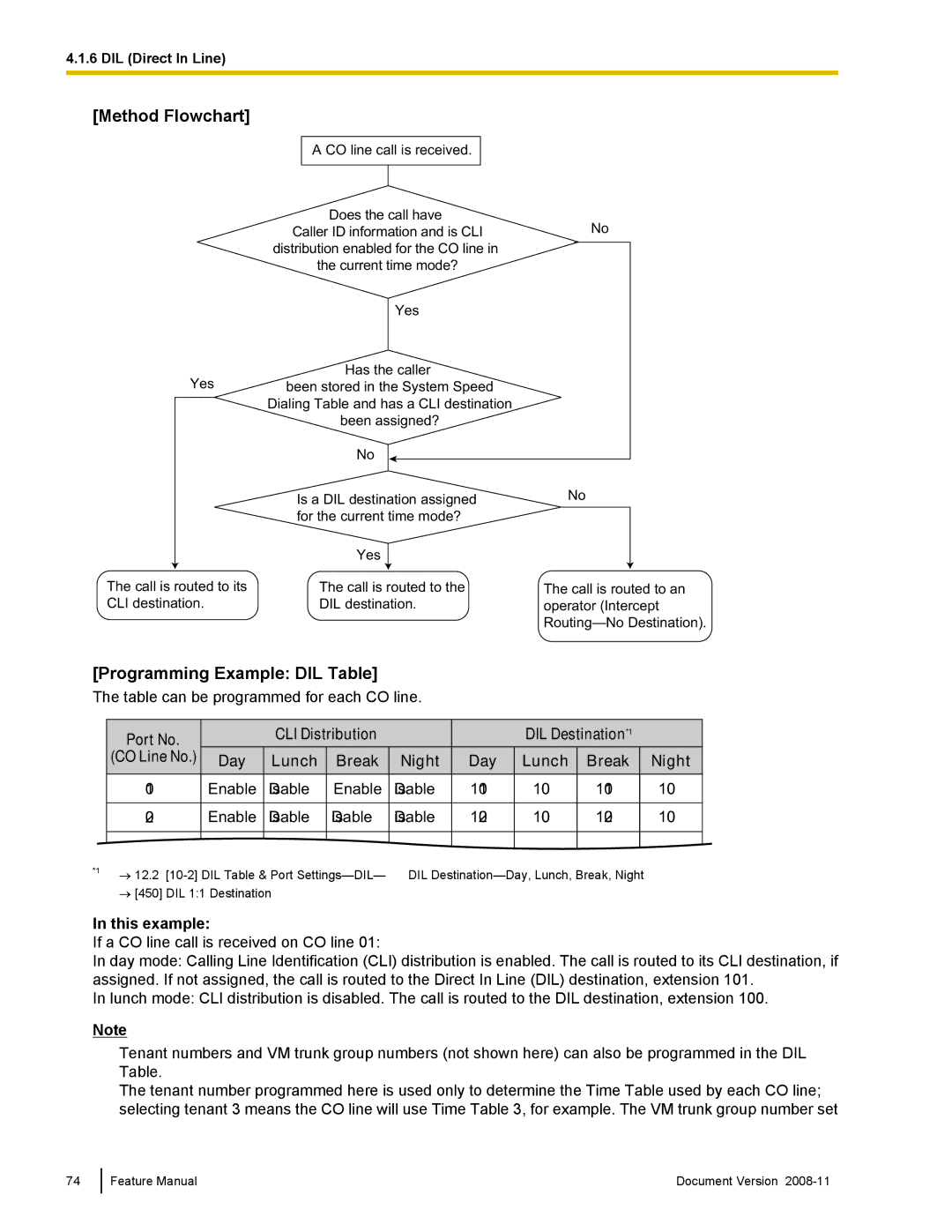
4.1.6 DIL (Direct In Line)
[Method Flowchart]
Yes
A CO line call is received.
Does the call have
Caller ID information and is CLINo distribution enabled for the CO line in
the current time mode?
Yes
Has the caller
been stored in the System Speed
Dialing Table and has a CLI destination
been assigned?
No |
|
|
| |
|
|
| No | |
Is a DIL destination assigned | ||||
| ||||
for the current time mode? |
| |||
|
| |||
Yes |
|
| ||
|
|
|
| |
The call is routed to its CLI destination.
The call is routed to the DIL destination.
The call is routed to an operator (Intercept
[Programming Example: DIL Table]
The table can be programmed for each CO line.
| Port No. |
| CLI Distribution |
|
| DIL Destination*1 |
| ||||
| (CO Line No.) | Day | Lunch | Break | Night | Day | Lunch | Break |
| Night | |
|
|
|
| ||||||||
| 01 |
| Enable | Disable | Enable | Disable | 101 | 100 | 101 |
| 100 |
|
|
|
|
|
|
|
|
|
|
|
|
| 02 |
| Enable | Disable | Disable | Disable | 102 | 100 | 102 |
| 100 |
*1 |
|
|
|
|
|
|
|
|
|
|
|
|
|
|
|
|
|
|
|
|
|
| |
→ 12.2 | DIL |
| |||||||||
|
| ||||||||||
→[450] DIL 1:1 Destination
In this example:
If a CO line call is received on CO line 01:
In day mode: Calling Line Identification (CLI) distribution is enabled. The call is routed to its CLI destination, if assigned. If not assigned, the call is routed to the Direct In Line (DIL) destination, extension 101.
In lunch mode: CLI distribution is disabled. The call is routed to the DIL destination, extension 100.
Note
Tenant numbers and VM trunk group numbers (not shown here) can also be programmed in the DIL Table.
The tenant number programmed here is used only to determine the Time Table used by each CO line; selecting tenant 3 means the CO line will use Time Table 3, for example. The VM trunk group number set
74
Feature Manual | Document Version |
